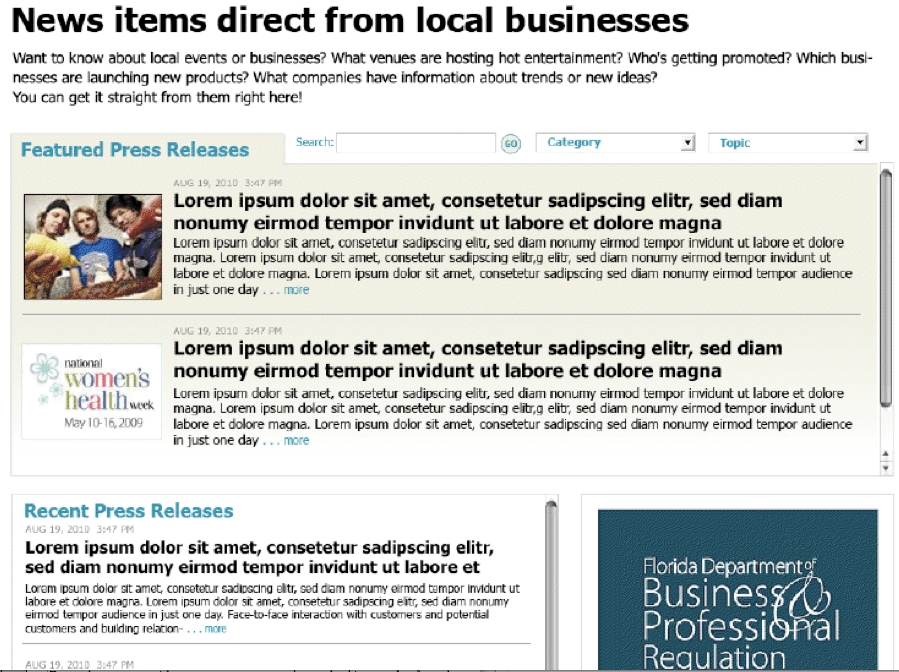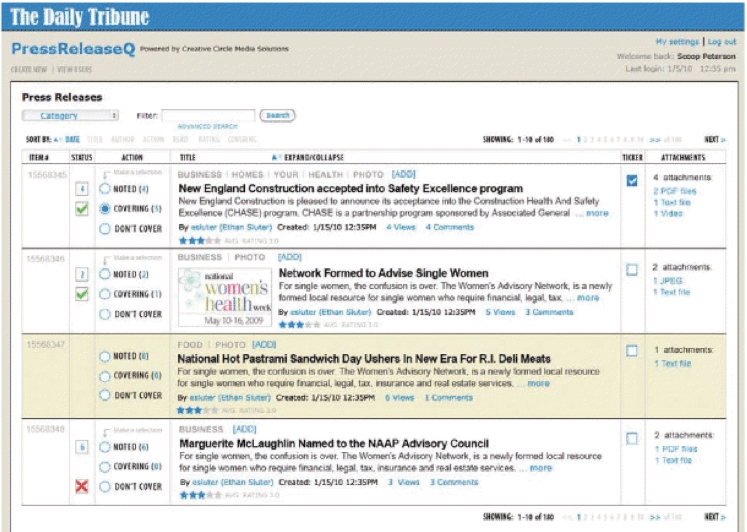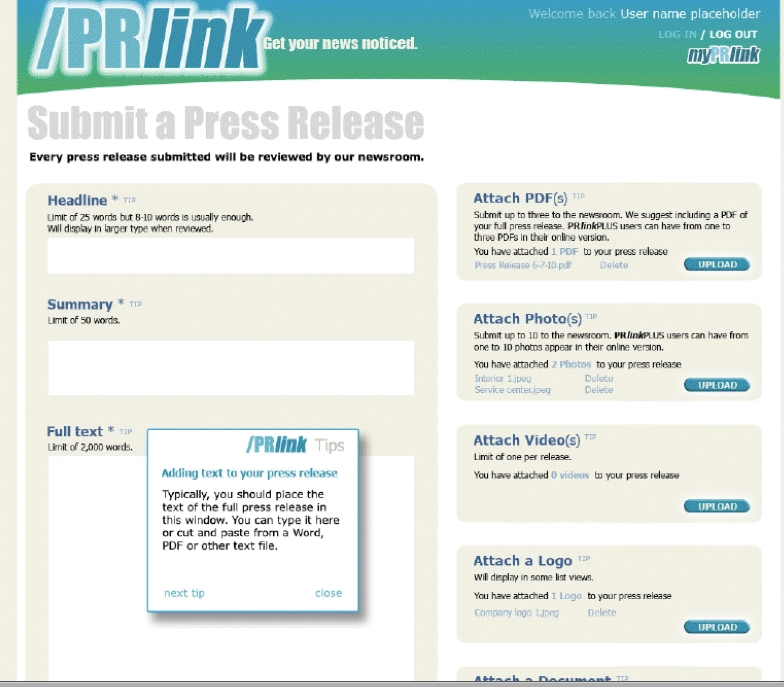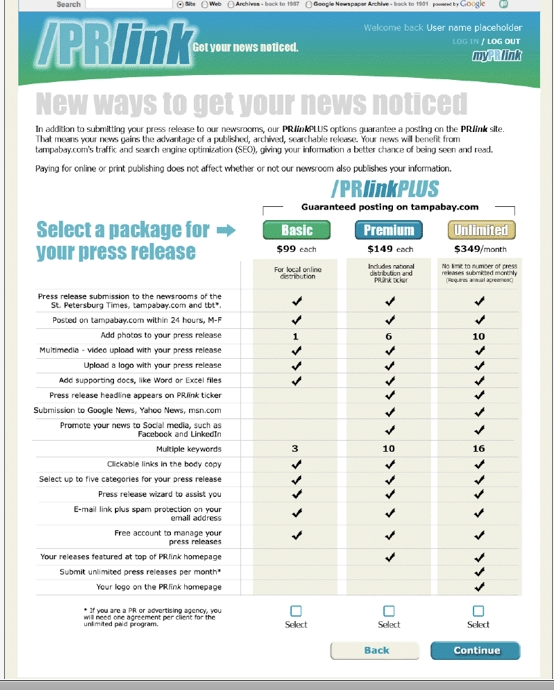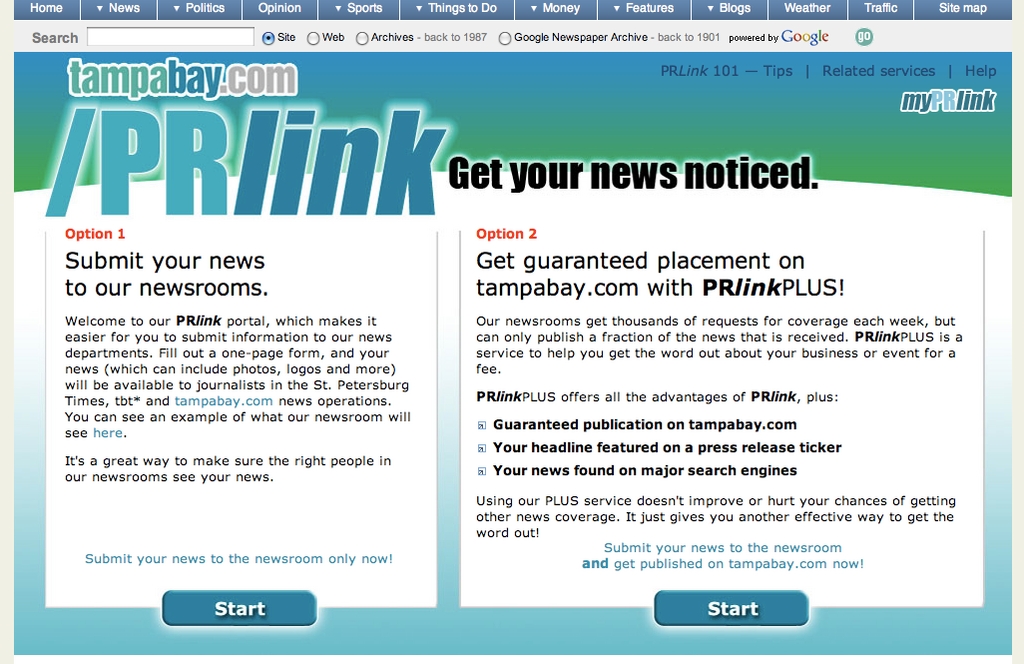Here comes the paid press release site
The St. Petersburg Times is launching a new, paid press release service today that has a lot of potential.
The software, developed by Creative Circle Media Solutions (developers of the software for this site) allows press releases to both be posted for a charge (say $99) on a special press release area of Tampabay.com, the newspaper's main website, and also be delivered to the newsroom in much more usable format than is happening now.
The main value for businesses who purchase press releases on TampaBay.com is in the SEO, but the service also provides a better way to communicate with reporters. The St. Petersburg Times, for example, receives about 7000 to 10,000 press releases a week.
"Right now, press releases are a mess. They come in via email, fax and mail. Few have visuals. Many have to be re-keyboarded to use. Many go to the wrong people or are never seen. Others come to everyone, often causing multiple reporters to waste time reporting on the same item," says Bill Ostendorf, CEO of Creative Circule Media Services.
The new format allows for self-serve entry and charges companies to have the release posted.
"Other companies make a fortune on press releases. Press release distribution is a $2.2 billion industry for firms like PRNewswire. But newspapers get nothing. Except that these firms flood their email account with information that newspapers rarely use.
"We set out to revolutionize this process and turn it all into something newspapers could manage more easily and make money on. With our press release portal, we've simply built a better mousetrap."
The way that it works is this:
People submit press releases through the portal (see image to the right). They are "guaranteed' that a newsroom person will review their information and that it will be available to all journalists.
The system is easy to use and solicits photos, logos, supporting documents, video and more, hopefully giving the newsroom more complete and visual information to work with. Submitters put in their phone number and email address,
Reporters can see every press release the second it is submitted; sort it by beat or topic or do searches. The newsroom view shows whether the release has a photo, logo, pdf, video or other attachment. Reporters can email the submitter right from the list view if they need more information.
Journalists can also privately rate, comment on each item or indicate that they've read or are covering the event or item. They can even mark it "don't cover." They can download content to their desktop to use in print or online.
"And it will be a huge resource because the other problem with press releases is that we throw them all away," Ostendorf notes.
"We don't save any of it unless we publish it. And we only publish a tiny fraction of what comes through. Now every press release will be archived in a searchable, digital database. Three years from now, when Company X goes out of business because of fraud, we won't have to scramble for a picture of the CEO or products or their logo. We'll have dozens of press releases full of promises and potential in our database."
Meanwhile, it could be a huge money maker.
"We're offering people ... the opportunity to get their press release published immediately online on a press release site hosted by the St. Pete Times.
"The beauty of this is that search engines see these stories as part of the newspaper report and give them very high search engine rankings. This is one of the first products we know of in the industry that directly takes advantage of the SEO value of a media site."
At St. Petersburg Times, if 1% of the 7,000 and 10,000 press releases a week paid $99 to get their press release published, it could mean as much as $500,000 in new revenue for the paper, Ostendorf estimates.
And it's all new revenue because PR funds are usually a separate budget from advertising dollars.
"While our initial target is newspapers, there is no reason this wouldn't work for a TV station or magazine -- especially a trade magazine. We're offering clients special deals to sign up in the next 60 days. Then the price goes up."
This is a great idea and the design of the forms is first rate.

The author, Alisa Cromer is publisher of a variety of online media, including LocalMediaInsider and MediaExecsTech, developed while on a fellowship with the Reynolds Journalism Institute and which has evolved into a leading marketing company for media technology start-ups. In 2017 she founded Worldstir.com, an online magazine, to showcases perspectives from around the world on new topic each month, translated from and to the top five languages in the world.

